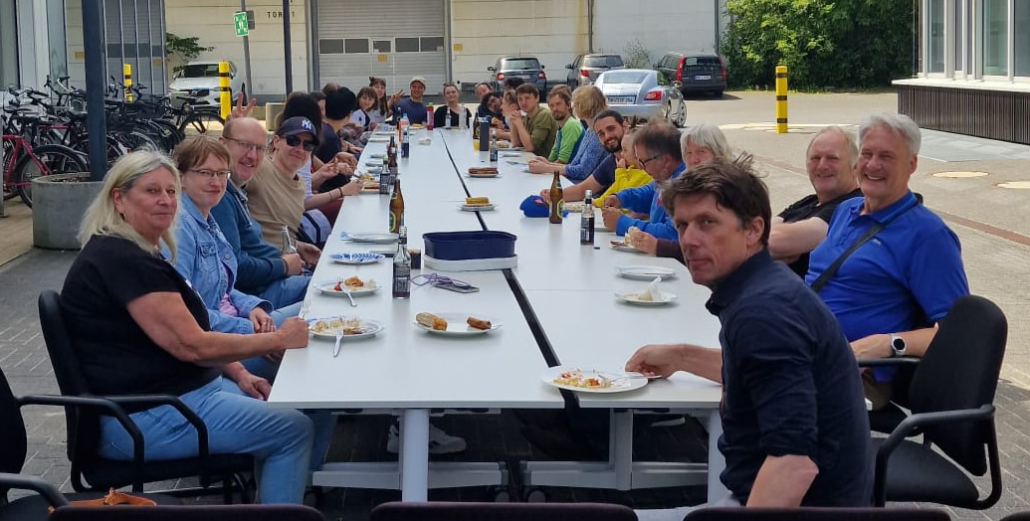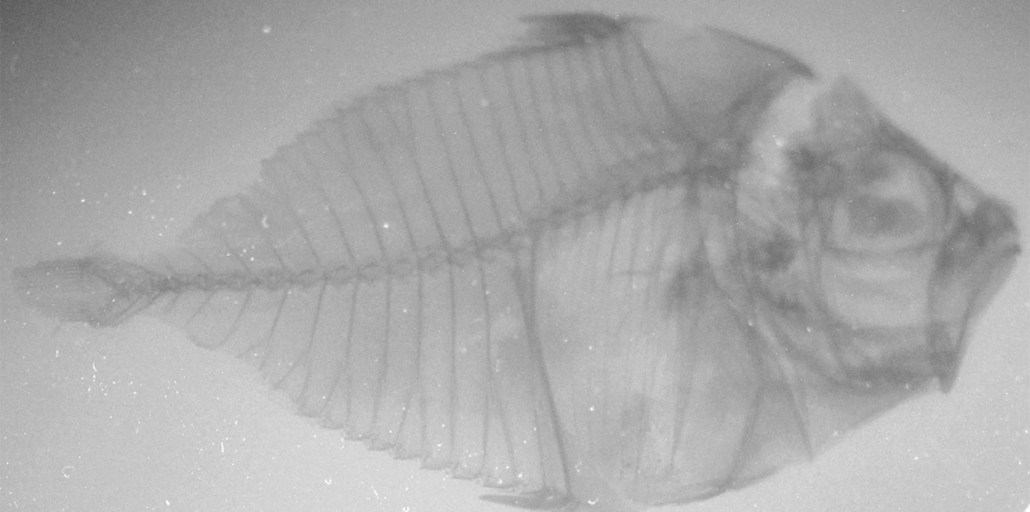
Credit: Mehmet Bayindir
Our recent JACS article on the luminescent nanocluster glass (NCG) is highlighted by Nature. [ Nature Research Highlight ]

An X-ray image of a fish is captured with the use of a glass that has an unusual internal structure. Credit: Chunwei Dong, Mehmet Bayindir, Osman Bakr/KAUST
Nanowire arrays interfaced with biological cells have been demonstrated to be potent tools for advanced applications such as sensing, stimulation, or drug delivery. This study published in Advanced Materials Interfaces demonstrates the generation of functional human iPSC-derived neurons on nanowire arrays with varying geometrical specifications. The cell/nanowire interactions range from fakir-like states to nanowire-encapsulating states depending on the array characteristics. The neurons are functional with similar kinetics of the action potentials highlighting the equivalence of the nanowire arrays for neuronal differentiation.
The research of M.Sc. Jann Harberts on neurons cultivated on tailor-made artificial substrates has been presented in the latest Universität Hamburg magazine “19NEUNZEHN” (inside cover and on page 22).
A press release entitled “Cell-culture microarchitectures for 3D neuronal networks” has been published by Nanoscribe GmbH referring to the work of Cornelius Fendler published in Advanced Biosystems.
A tech note entitled “Fabrication and Characterization of Nanofluidic Devices for DNA Optical Mapping” has been published by Carl Zeiss Microscopy GmbH, Germany and Parisa Bayat, Robert H. Blick, and Irene Fernández-Cuesta.
A joined publication entitled “Electrochemical Engineering of Nanoporous Materials for Photocatalysis: Fundamentals, Advances, and Perspectives” with the group of Dr. Abel Santos (University Adelaide) has been publishedin ACS Langmuir
Abstract: Photocatalysis comprises a variety of light-driven processes in which solar energy is converted into green chemical energy to drive reactions such as water splitting for hydrogen energy generation, degradation of environmental pollutants, CO2 reduction and NH3 production. Electrochemically engineered nanoporous materials are attractive photocatalyst platforms for a plethora of applications due to their large effective surface area, highly controllable and tuneable light-harvesting capabilities, efficient charge carrier separation and enhanced diffusion of reactive species. Such tailor-made nanoporous substrates with rational chemical and structural designs provide new exciting opportunities to develop advanced optical semiconductor structures capable of performing precise and versatile control over light–matter interactions to harness electromagnetic waves with unprecedented high efficiency and selectivity for photocatalysis. This review introduces fundamental developments and recent advances of electrochemically engineered nanoporous materials and their application as platforms for photocatalysis, with a final prospective outlook about this dynamic field.
A new publication “Low-Temperature Vapor-Solid Growth of ZnO Nanowhiskers for Electron Field Emission” from Stefanie and Carina has been published in MDPI Coatings.
Abstract:
Jonas is going to defend his PhD thesis entitled: “Electron Spin Resonance Studies on Spin-Orbit Interactions
in Graphene” on Monday, 30.09.2019 at 1pm in CHyN (room 3.01).
Please support him and his work by showing up.
We are conducting research in the fields of nanoscience and nanotechnology. Specifically, we investigate quantum transport in van der Waals materials, nanomaterial growth, and application of nanostructured materials in photonics, electronics, mechanics, bio-circuits.
The CHyN is registered as a ‘Gerätezentrum’ of the Deutsche Forschungsgemeinschaft (DFG) under code RI_00477.
Center for Hybrid Nanostructures
University of Hamburg
Address: Luruper Chaussee 149, Room: R2.21, 22607 Hamburg, Germany
| M | T | W | T | F | S | S |
|---|---|---|---|---|---|---|
| 1 | 2 | |||||
| 3 | 4 | 5 | 6 | 7 | 8 | 9 |
| 10 | 11 | 12 | 13 | 14 | 15 | 16 |
| 17 | 18 | 19 | 20 | 21 | 22 | 23 |
| 24 | 25 | 26 | 27 | 28 | 29 | 30 |
